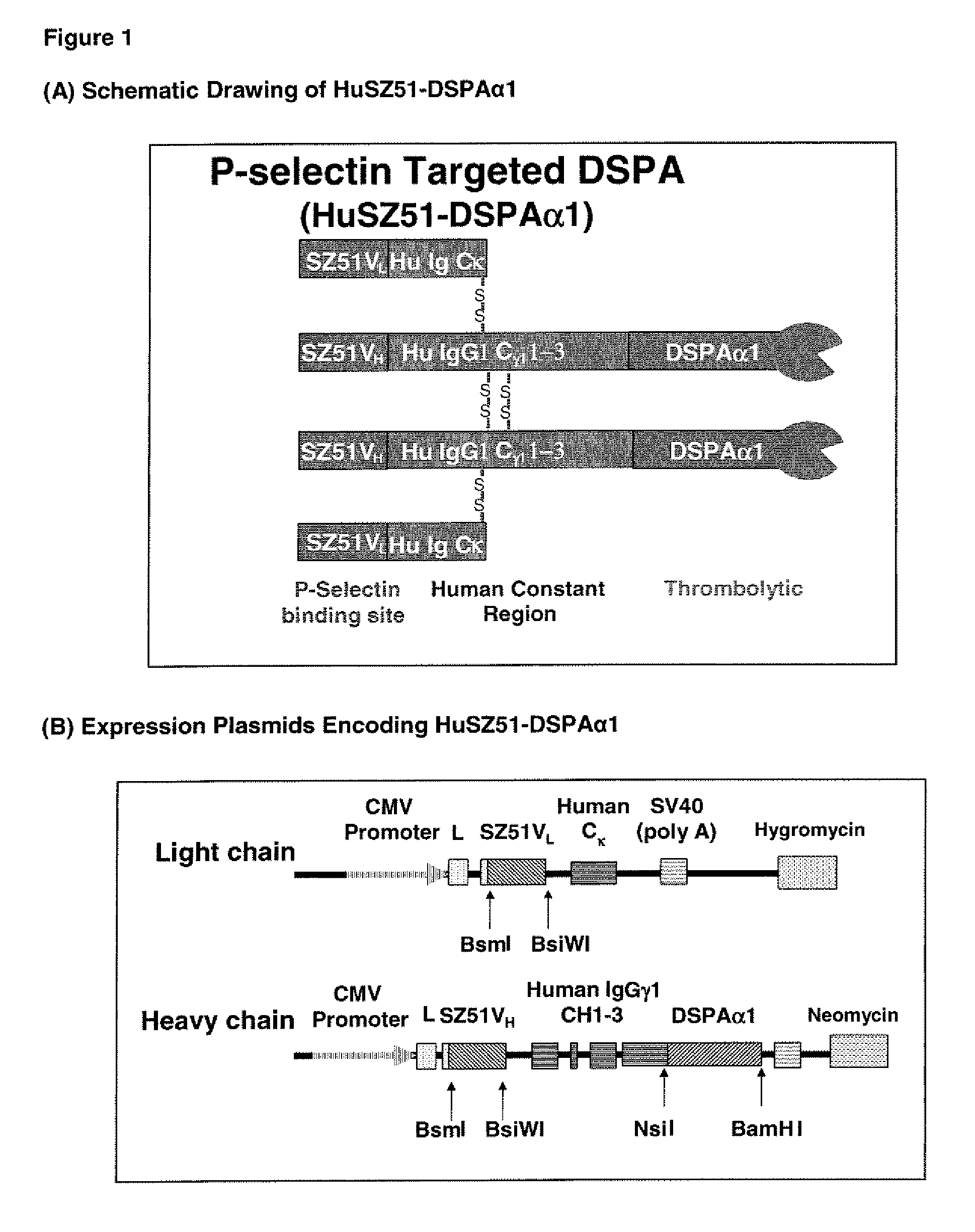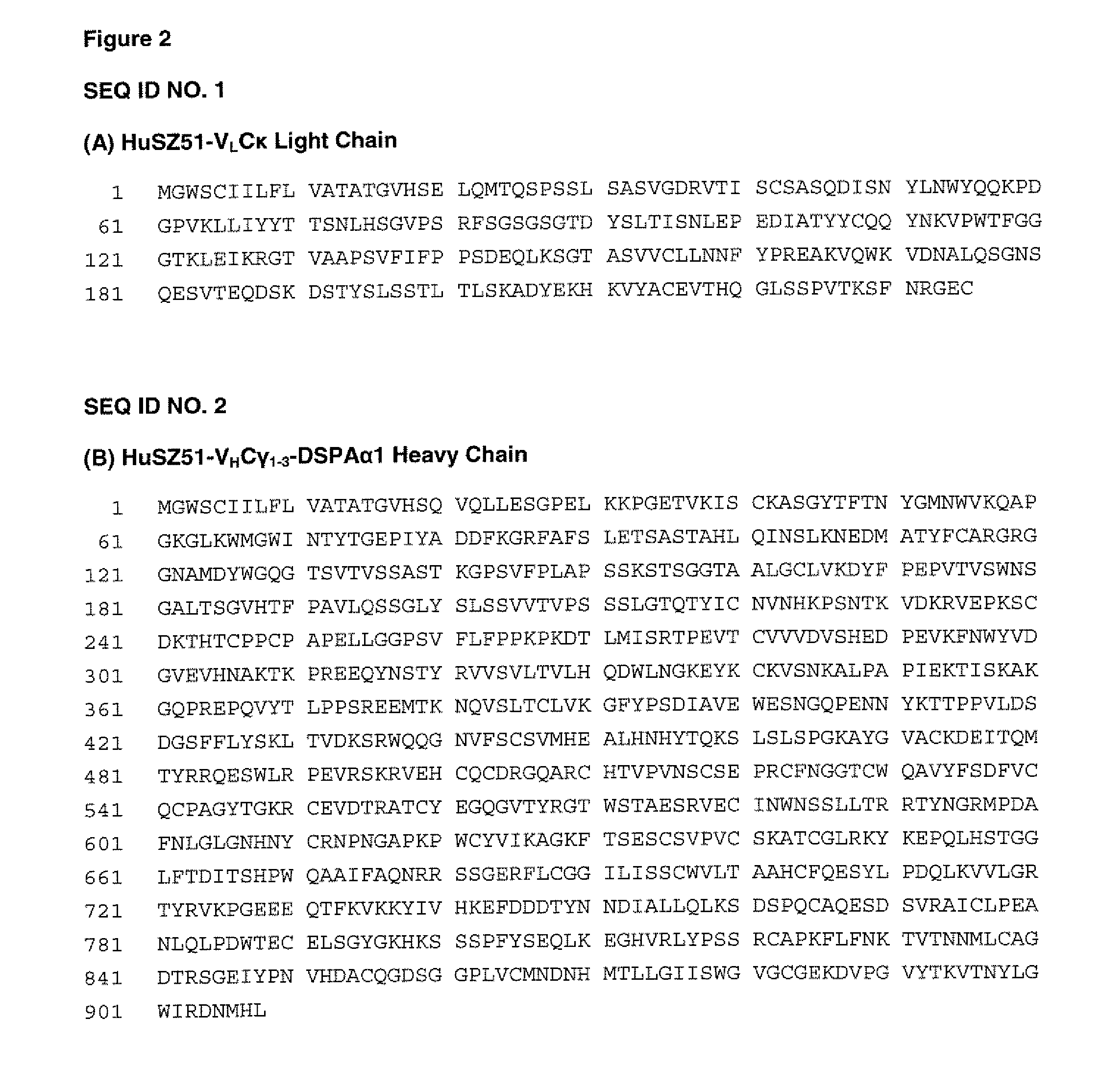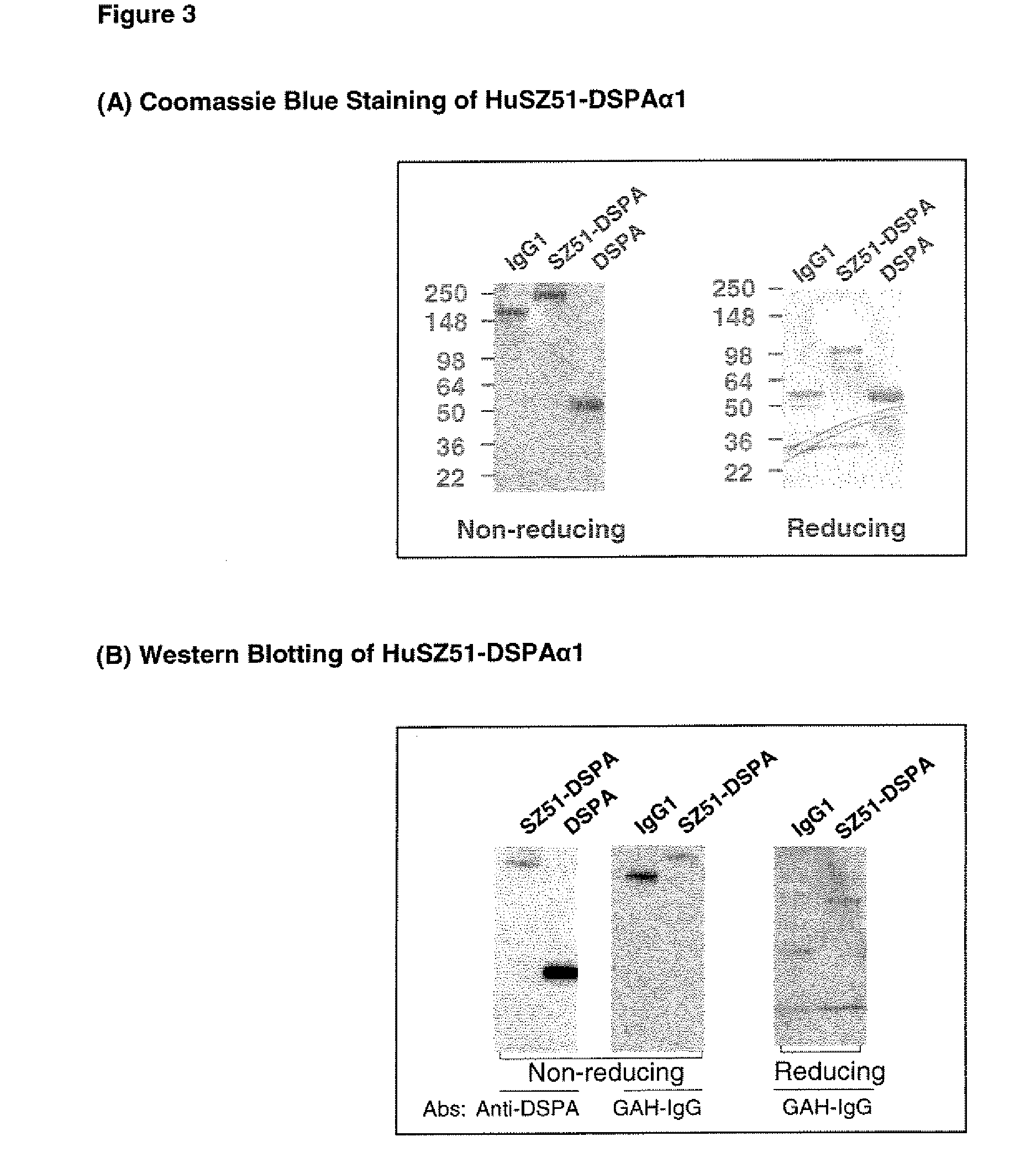Targeted plasminogen activator fusion proteins as thromobolytic agents
- Summary
- Abstract
- Description
- Claims
- Application Information
AI Technical Summary
Benefits of technology
Problems solved by technology
Method used
Image
Examples
example 1
SDS-PAGE and Western Blot Analysis of an Anti-P-Selectin-DSPA Fusion Protein
[0184]The purified HuSZ51-DSPAalpha1 fusion protein was analyzed by SDS-PAGE and by Western blotting. The data indicates that the purified HuSZ51-DSPAalpha1 is intact and free of detectable contaminating material.
[0185]1. Analysis of HuSZ51-DSPAalpha1 by SDS-PAGE. Purified HuSZ51-DSPAalpha1, recombinant DSPAalpha1, and human IgG1 were separated on 4 to 10% gradient SDS-PAGE gels under non-reducing and reducing conditions, and stained with Commassie blue. The results are shown in FIG. 3A. Under non-reducing conditions, HuSZ51-DSPAalpha1 has an apparent Mr. of ˜250 kDa, and under reducing conditions, HuSZ51-DSPAalpha1 is composed of two subunits of ˜108 kDa and ˜23 kDa, which correspond to HuSZ51-VHCγ1-3-DSPAalpha1 and HuSZ51-VLCκ, respectively. No significant degradation products or impurities are apparent in the purified HuSZ51-DSPAalpha1 material.
[0186]2. Analysis of HuSZ51-DSPAalpha1 by Western blotting. P...
example 2
Specific P-Selectin Binding Activity of an Anti-P-Selectin-DSPA Fusion Protein
[0188]The ability of purified HuSZ51-DSPAalpha1 to bind specifically to P-selectin in vitro was investigated using a nitrocellulose binding assay and by ELISA. The data indicates that HuSZ51-DSPAalpha1 retains the P-selectin binding activity of the original anti-P-selectin monoclonal antibody SZ51.
[0189]1. Binding of HuSZ51-DSPAalpha1 to P-selectin on a nitrocellulose membrane. The indicated amounts of recombinant soluble P-selectin (R&D systems), 0, 5, 10, 20, or 40 ng, along with 10 ng of human IgG1, were separated on SDS-PAGE gels and then transferred onto nitrocellulose membranes. One membrane was incubated with HuSZ51, and the second was incubated with HuSZ51-DSPAalpha1. After washing, bound HuSZ51 or HuSZ51-DSPAalpha1 was detected by HRP-conjugated goat anti-human Fc. The intensity of human IgG1 lane, which is also detected by HRP-conjugated goat anti-human Fc was used as a normalization control. FIG...
example 3
Competitive Binding of an Anti-P-Selectin-DSPA Fusion Protein to P-Selectin
[0191]An ELISA-based competitive binding assay was designed to compare the P-selectin binding affinities of the parental P-selectin antibody, SZ51, and the anti-P-selectin-DSPA fusion protein, HuSZ51-DSPAalpha1. 96-Well plates were coated with 100 μl of recombinant human P-selectin (R & D Systems) per well at a final concentration of 2 μg / ml, and incubated overnight at 4° C. The coated plates were washed once with washing solution (PBS, pH 7.4 plus 0.05% Tween-20), and then incubated with 200 μl blocking solution (5% milk prepared in PBS) per well at 37° C. for 2 hours.
[0192]Fifty μl of serially diluted competitors (HuSZ51-DSPAalpha1, or human IgG1 as a negative control) at a final concentration ranging from 0 to 200 nM was added to individual wells, followed by the addition of 50 μl SZ51 (1.6 nM final) to each well, except for the blanks, and then the plates were incubated for 1 hour at 37° C. The plates wer...
PUM
| Property | Measurement | Unit |
|---|---|---|
| Fraction | aaaaa | aaaaa |
| Time | aaaaa | aaaaa |
| Volume | aaaaa | aaaaa |
Abstract
Description
Claims
Application Information
 Login to View More
Login to View More - R&D
- Intellectual Property
- Life Sciences
- Materials
- Tech Scout
- Unparalleled Data Quality
- Higher Quality Content
- 60% Fewer Hallucinations
Browse by: Latest US Patents, China's latest patents, Technical Efficacy Thesaurus, Application Domain, Technology Topic, Popular Technical Reports.
© 2025 PatSnap. All rights reserved.Legal|Privacy policy|Modern Slavery Act Transparency Statement|Sitemap|About US| Contact US: help@patsnap.com



